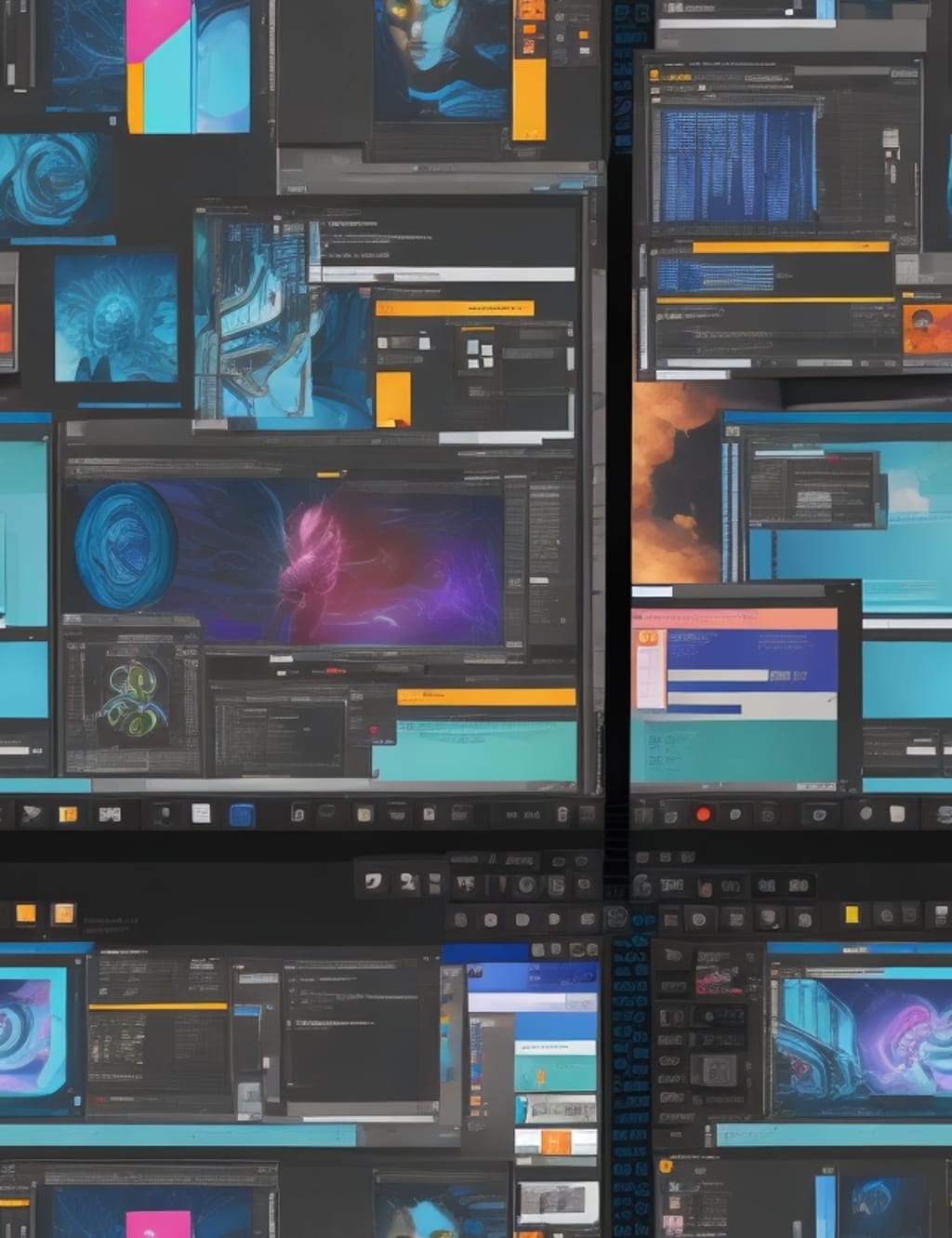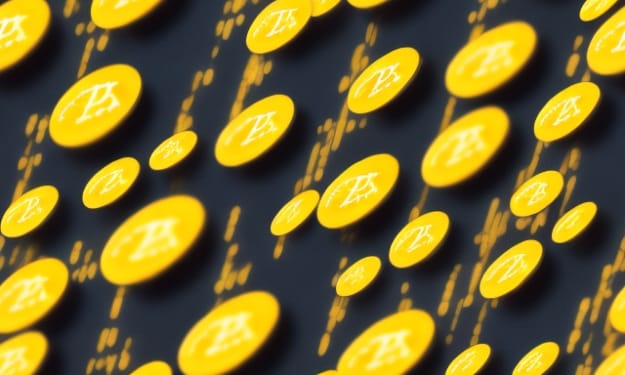Content warning
This story may contain sensitive material or discuss topics that some readers may find distressing. Reader discretion is advised. The views and opinions expressed in this story are those of the author and do not necessarily reflect the official policy or position of Vocal.
Harnessing the Power of AI in Creating Lofi Animations
In the ever-evolving world of digital art and animation, the advent of artificial intelligence (AI) has unlocked a plethora of possibilities. One such application is in the creation of Lofi animations, a style characterized by its low fidelity and often associated with chill and relaxing music. This article delves into the process of using AI to create Lofi animations, from conceptualization to rendering, and explores the technical aspects of how these AI tools work.

Conceptualization: The Birth of Ideas
The first step in creating any animation is conceptualization. This involves brainstorming ideas for the animation's theme, characters, and setting. Traditionally, this process relied heavily on human creativity. However, AI can now assist in this process, providing a new avenue for idea generation.
AI tools like OpenAI's GPT-3 can generate creative ideas based on given prompts. For instance, if an animator is struggling to come up with a theme for their Lofi animation, they could use GPT-3 to generate a list of potential themes. This not only saves time but also introduces a level of randomness and novelty that can lead to truly unique concepts.
Character and Environment Design: Crafting the Visuals
Once the concept is in place, the next step is to design the characters and environment. This is where the animator's vision starts to take shape, and AI can play a significant role in this process.
Generative Adversarial Networks (GANs) are a type of AI that can create unique character designs based on a dataset of existing images. By feeding a GAN a collection of images — say, pictures of different animals — the AI can generate a completely new creature that combines elements from the input data. This can be a powerful tool for animators looking to create unique characters for their Lofi animations.
To train a GAN for character design, you would need a large dataset of images in the style you want to emulate. The GAN would learn the patterns and features of these images and start generating similar designs. Over time, with enough training, the GAN can generate high-quality, unique character designs that fit the desired style.
Similarly, AI tools can generate environment designs. By inputting images of various landscapes, a GAN can generate a completely new, unique setting. This provides a starting point for artists to refine and add their personal touch, ensuring that the final product is both original and visually appealing.
Animation: Bringing the Art to Life
The next step in the process is animation — bringing the characters and environment to life. This is often the most time-consuming part of the process, but AI has made significant strides in this field.
Tools like Runway ML and EbSynth allow artists to animate static images or transform video footage into a desired art style. These tools use AI algorithms to understand the motion and style in the input data and apply it to the output. This creates a seamless animation that can be fine-tuned by the artist.
For instance, an animator could use EbSynth to transform a video of a person walking into a Lofi-style animation. The AI would analyze the motion in the video and apply it to the Lofi character, creating a smooth, natural-looking animation.
Style transfer is a technique where the style of one image is applied to another. This is done by separating the content and style of an image in a neural network, then recombining them. In animation, this can be used to apply a specific artistic style to a series of frames.
Music Synchronization: Setting the Mood
Lofi animations are often paired with Lofi music, creating a relaxing, chill atmosphere. Synchronizing the animation with the music is crucial to achieving this effect,and AI can help with this process.
Tools like Magenta Studio, developed by Google's AI team, can analyze the music's beats, tempo, and mood, and adjust the animation's timing and transitions accordingly. This ensures that the visuals and audio work together to create a cohesive, engaging experience for the viewer.
AI can analyze music and extract useful information for synchronizing animations. Beat detection algorithms can identify the beats in a piece of music, which can be used to time the transitions in the animation. Mood analysis is another technique that can be used. AI algorithms can analyze the musical elements of a track — such as tempo, key, and melody — and determine its mood. This information can be used to adjust the color palette, lighting, and other visual elements of the animation to match the mood of the music.
Rendering and Optimization: The Final Touches
The final step in the process is rendering and optimization. Rendering is the process of generating the final animation from the individual frames, while optimization involves reducing the file size without compromising the quality.
AI can assist in both of these areas. AI-based rendering tools can speed up the rendering process, which can be particularly beneficial for complex Lofi animations with many frames. These tools use AI algorithms to predict the appearance of future frames based on previous ones, reducing the amount of computation required.
Compression is another area where AI can be used. AI algorithms can analyze an animation and identify areas where the file size can be reduced without noticeable loss in quality. This can significantly reduce the file size of animations, making them easier to share and stream.
Conclusion: The Future of Animation with AI
In conclusion, AI offers a range of tools that can assist in the creation of Lofi animations. From conceptualization to rendering, AI can streamline the process, allowing artists to focus on the creative aspects of their work.
Moreover, AI can introduce a level of novelty and randomness that can lead to truly unique animations. By generating unexpected character designs or suggesting unconventional themes, AI can push the boundaries of what is possible in animation.
As AI technology continues to evolve, we can expect to see even more innovative applications in the world of animation. The integration of AI in the animation process is not just about making the process more efficient — it's about expanding the realm of the possible, pushing the boundaries of creativity, and opening up new avenues for artistic expression.
The rise of AI in animation also raises interesting questions about the nature of creativity and the role of technology in the creative process. As we continue to explore these questions, one thing is clear: AI has the potential to revolutionize the world of animation, and we are just beginning to scratch the surface of what is possible.
About the Creator
Huatin OU
Originally from Western China,live in Saskatoon as a freelance writer. vibrant energy of this city fuels creativity, lending a unique flair to work. a fusion of Eastern roots and Western experiences, captures the magic find in everyday life
Enjoyed the story? Support the Creator.
Subscribe for free to receive all their stories in your feed. You could also pledge your support or give them a one-off tip, letting them know you appreciate their work.






Comments
There are no comments for this story
Be the first to respond and start the conversation.